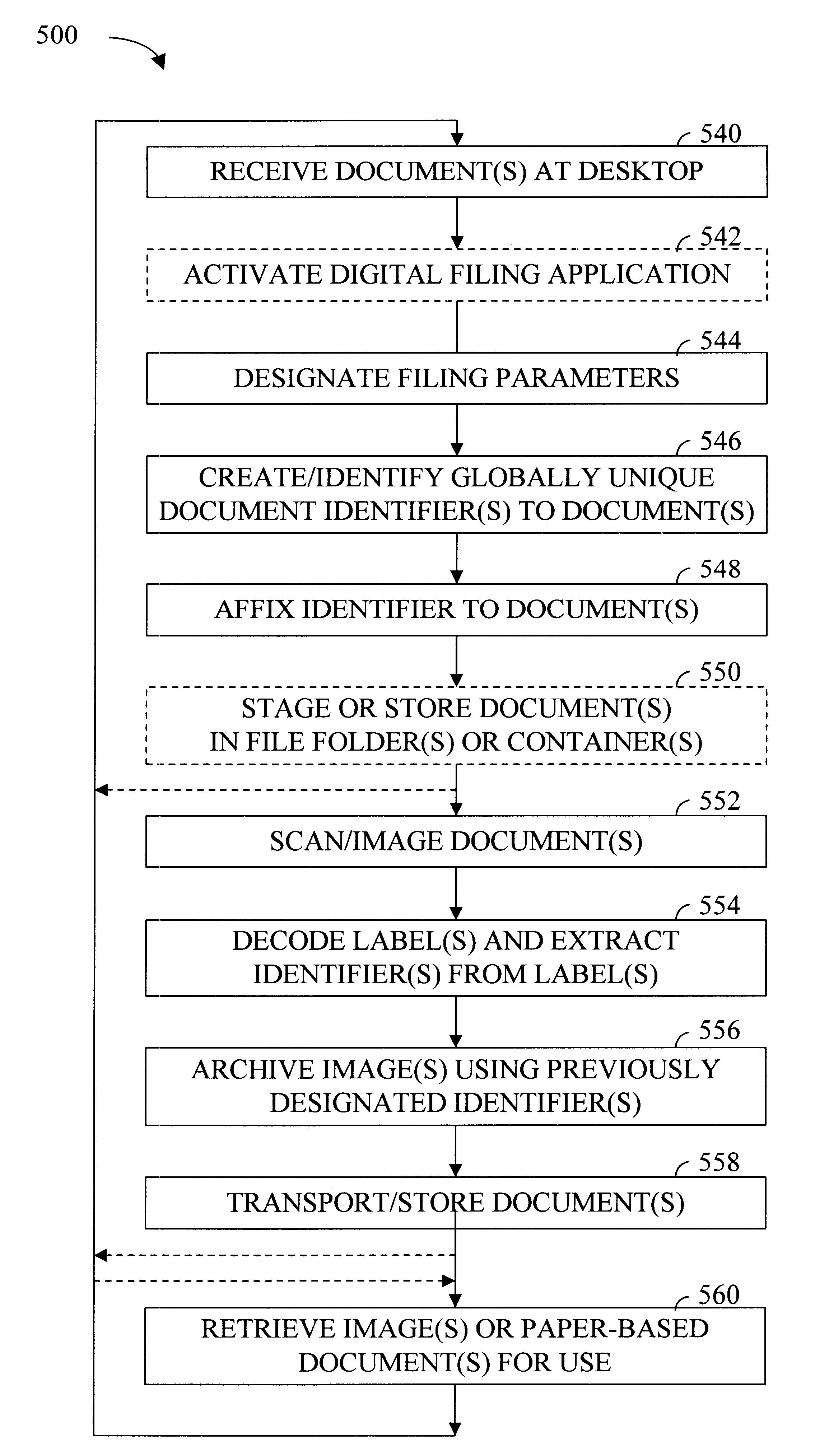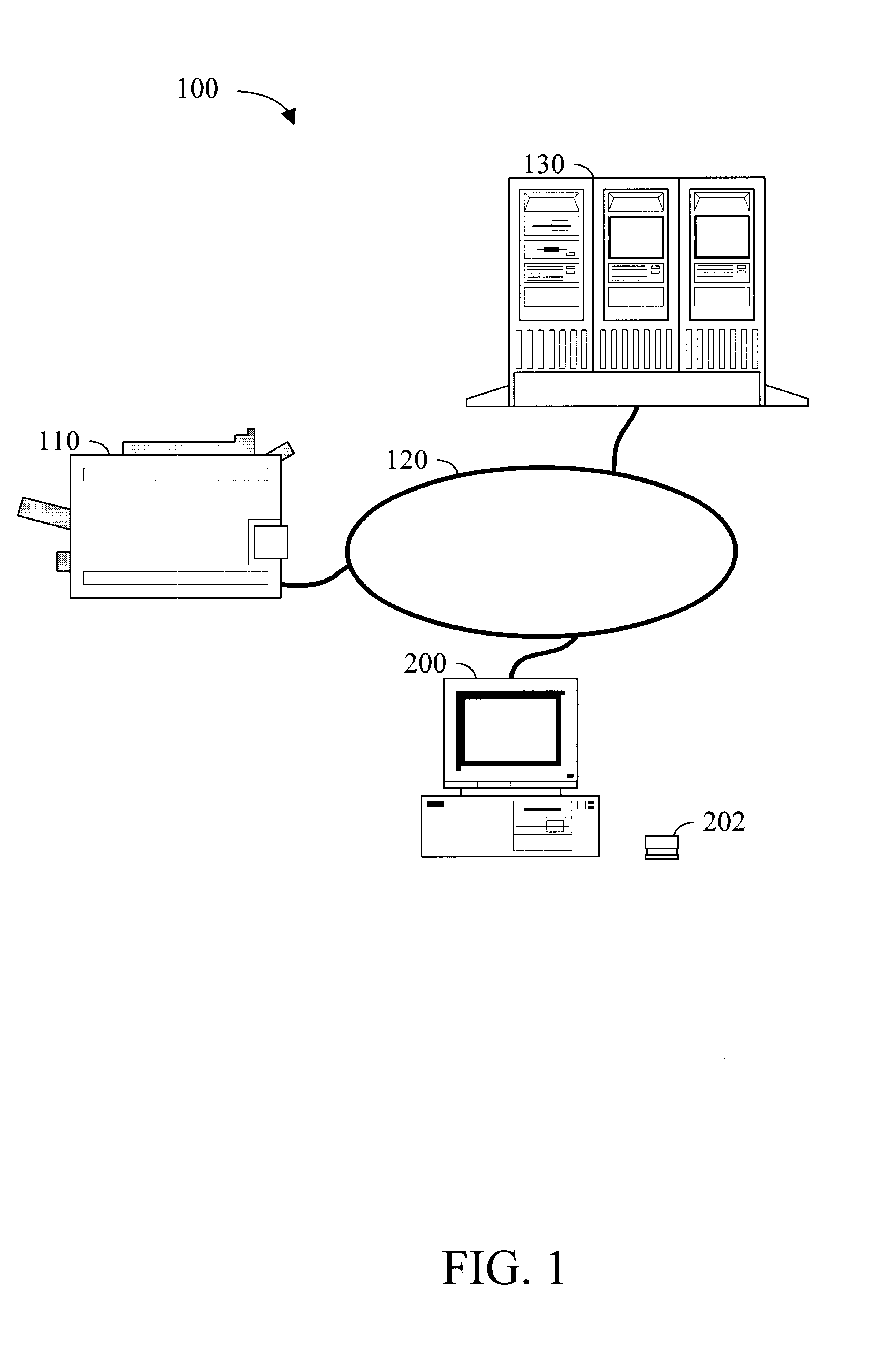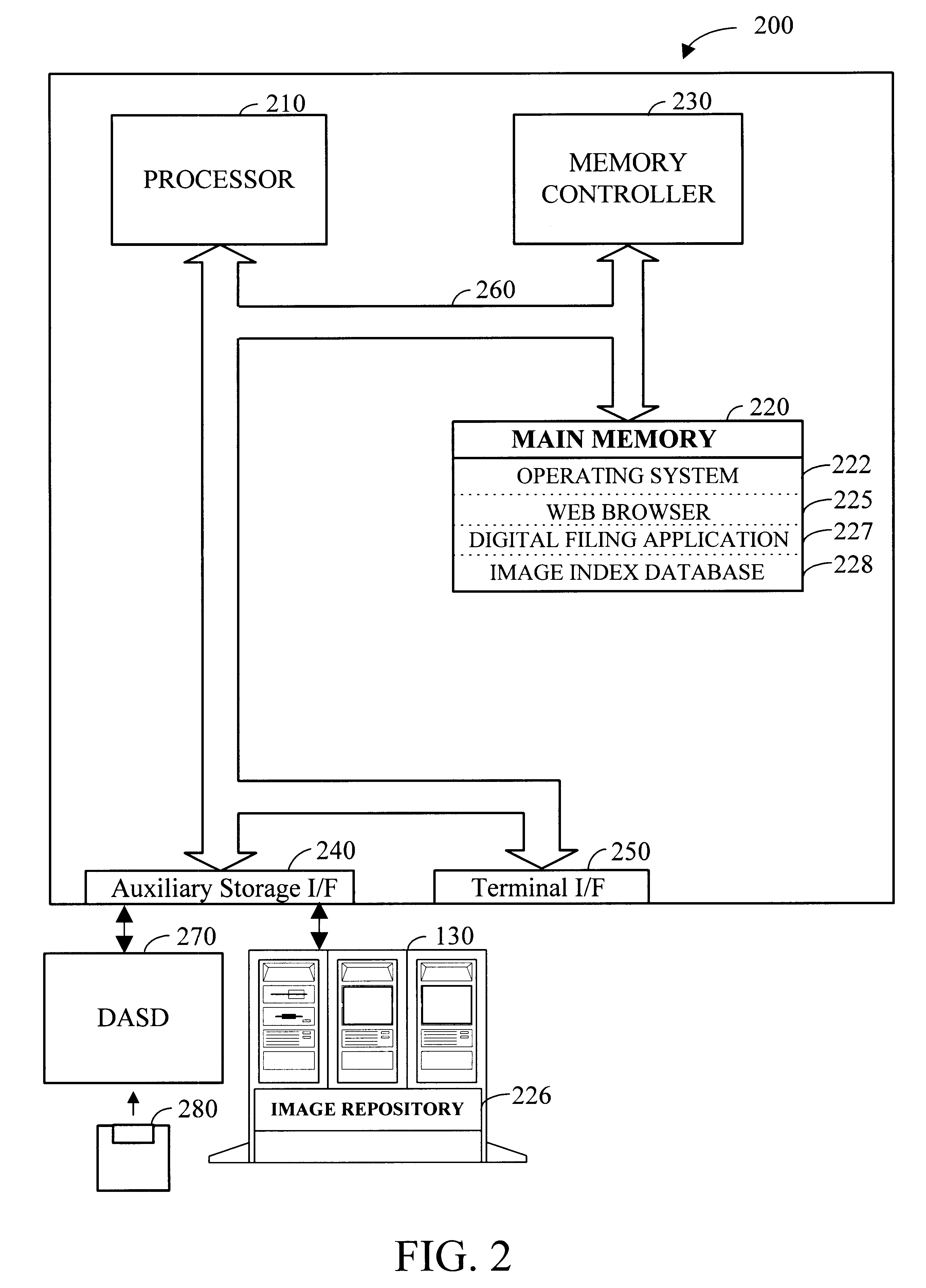However, the simple truth is that today we have more paper-based information,
document processing labor costs,
document storage overhead, and hard-copy related dependencies in our society than ever before.
In addition, in
spite of the rapid proliferation of computer systems and
computer users, it is estimated that less than 25% of the information used in the world today is available in a computer-accessible format.
The very paperwork that drives most businesses and organizations is slowly starting to
choke the productivity out of some of them as these businesses are unable to effectively and efficiently manage paper-based information.
However, much of the paper burden in a given organization is directly attributable to paper-based documents that are generated by external sources.
Unfortunately, even if a company adopts an outsourced model for storing their physical paper, this merely pushes the storage issue off to another physical location.
In addition, the costs associated with retrieval of physical documents stored at an off-site facility can be very high.
This is because the retrieval process is a labor-intensive manual process that involves people scouring through boxes of paper stored in massive warehouses.
Finally, there is no simple, integrated methodology to track the paper throughout its life cycle since the outsourcing company can't quickly and easily retrieve a given document or page of a document.
However, even with the high cost and relative inefficiencies associated with these labor intensive paper storage and management solutions, they are very prevalent in the industry today simply because they do offer a solution.
Though many different
document imaging systems have been commercialized since the late 1980s, none have gained widespread acceptance.
Even though the quantifiable burdens of paper
information storage, access and management are well known and uniformly decried,
document imaging systems have not been broadly adopted as an alternative to the traditional filing cabinet.
Basically, the lack of an efficient, cost-effective, adaptable method for driving paper through the scan and index process continues to thwart the efforts of most organizations that try to adopt wide-reaching
document imaging solutions.
Document capture (scanning and indexing) sub-systems are usually the most costly, labor-intensive, time-consuming, and error prone component of a traditional document imaging solution.
The costly,
integrated systems developed for these requirements generally institute a rigid process for a targeted, high-volume, structured paper flow.
Because customized document input sub-systems are justified and built for targeted business applications, they do not adapt well to other, diversified document imaging needs, smaller
workgroup filing systems, or ad hoc filing systems.
Unfortunately, diverse, smaller
workgroup filing, and ad hoc filing systems represent the bulk of paper filing.
The paradigm of a document input
assembly line does not match up well with many existing paper movement and filing patterns found in most businesses and organizations.
While this system is effective for imaging a high volume, structured paper flow, it is counter-intuitive to the natural flow and use of documents in most offices, and therefore, is not applicable.
Further, many of these traditional document imaging systems also require the acquisition of expensive new equipment and the training of new workers simply to manage and process the in-coming paper-based documents.
This requirement adds a cost barrier to adoption that many organizations cannot overcome.
By design, these systems limit the availability of the electronic images to the audience within the proprietary document imaging system and thereby reduce the probability of
document exchange with other systems and external organizations that may require access to a given document.
As previously mentioned, in most large scale document imaging environments, the
end user is alienated from the entire imaging / indexing process and does not control the flow or disposition of their own documents.
User adoption factors are crucial because while the burdens associated with handling paper are ingrained and often accepted, the changes involved in adopting and implementing document imaging systems are wide-reaching and potentially disruptive.
However, without a better system and method for overcoming the significant limitations of the present document indexing, imaging, storage, retrieval, and handling systems, the world will be increasingly dependent on antiquated solutions and the associate declines in productivity.
Further, even with the best of the currently available
digital imaging solutions, the original paper-based documents must still be handled, stored, and either retained or destroyed, depending on the long-term value of the paper-based documents and the specific retention policies related to the paper-based documents.
Therefore, even after a
digital imaging solution has been adopted, the problems mentioned above related to the ultimate disposition of the paper-based documents remains and the company is left with two separate, monolithic solutions that are used to
handle the same information.
Instead of having two disparate systems which each require unique and independent methods for retrieving either the physical paper-based documents or the digital images of the paper-based documents, there will continue to be unnecessary complication and redundancy between the systems.
 Login to View More
Login to View More  Login to View More
Login to View More 


